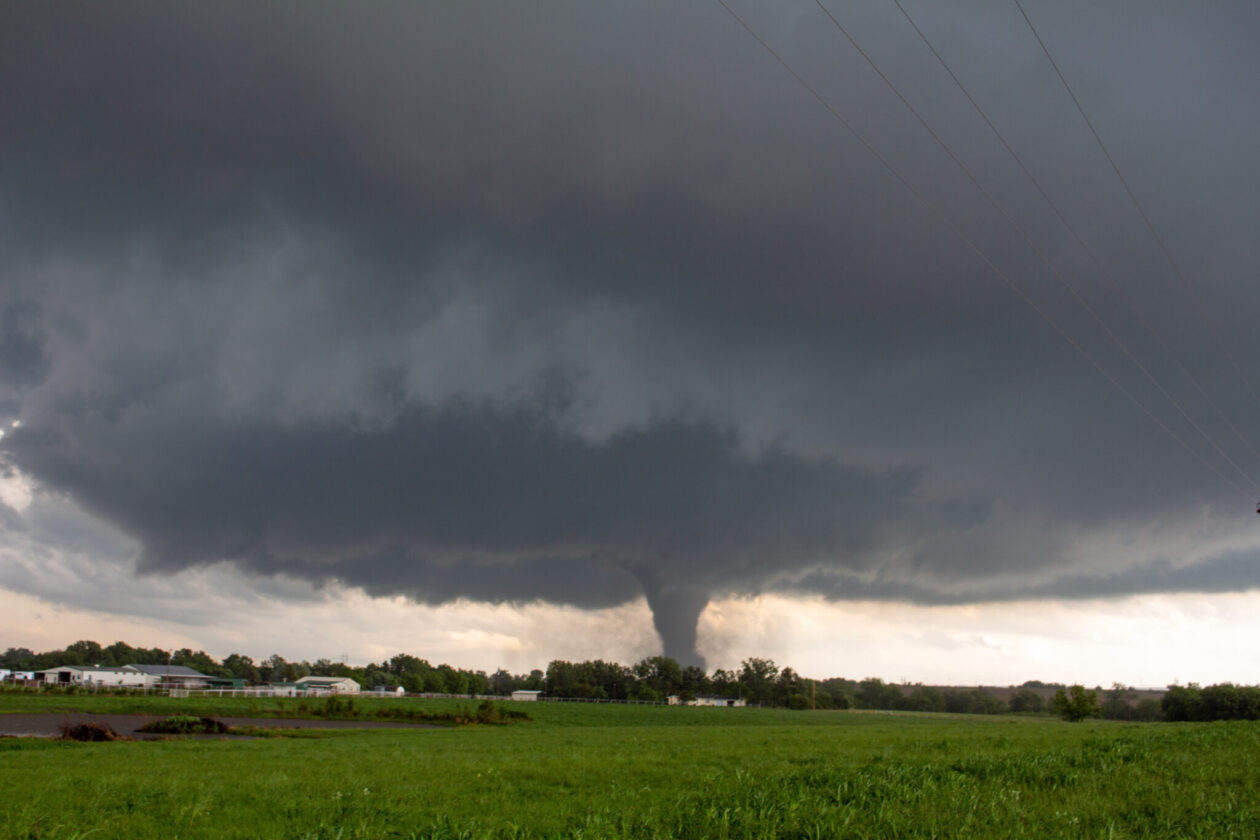Missouri S&T researcher studies how energy shifts could improve tornado predictions
Posted by Greg Edwards

A tornado touches down near a farm. Photo by NZP Chasers/Adobe Stock.
When the National Weather Service (NWS) issues a tornado warning, it’s based on storm rotation, wind patterns and other conditions suggesting a tornado may be imminent. With a $300,000 grant from the National Science Foundation, a Missouri S&T researcher is studying if a new factor could improve prediction accuracy.
“One extreme weather mystery is why some supercell thunderstorms develop into a tornado, while others with similar conditions do not,” says Dr. Grace Yan, an S&T professor of structural engineering and director of the university’s Center for Hazard Mitigation and Community Resilience and Wind Hazard Mitigation Laboratory. “Inverse energy cascades, which will be the focus of our research, could be a key factor in understanding what is truly happening and why.”
During an inverse energy cascade, Yan says the storm’s momentum shifts from small, fast, swirling motions, called eddies, to larger, slower-swirling eddies that could potentially lead to a storm in developing into a full-blown tornado.
“Most meteorological research for tornadoes has applied a large-scale model and looked more at the storm’s bigger picture,” she says. “In this study, we will examine a full spectrum of eddies at both the traditional large scale and a much smaller scale with high-resolution fluid dynamics simulations to better understand what is unfolding behind the scenes of the storm.”
Yan says the simulations will be fed data from the larger-scale models and then take the details to a new level while closely replicating the formation of tornadoes under various conditions.
“We hope this research will help meteorologists make more precise forecasts and provide the public with as much warning as possible about what to expect,” she says. “Tornadoes can wreak havoc and cause significant damage, so it is crucial that we do everything we can to help those in harm’s way stay safe.”
Dr. Charles Li, a professor of mathematics who studies turbulence at the University of Missouri-Columbia, is a co-principal investigator for the project.
Yan works in S&T’s civil, architectural and environmental engineering department. For more information about the department, visit care.mst.edu.
About Missouri S&T
Missouri University of Science and Technology (Missouri S&T) is a STEM-focused research university of over 7,000 students located in Rolla, Missouri. Part of the four-campus University of Missouri System, Missouri S&T offers over 100 degrees in 40 areas of study and is among the nation’s top public universities for salary impact, according to the Wall Street Journal. For more information about Missouri S&T, visit www.mst.edu.
Leave a Reply